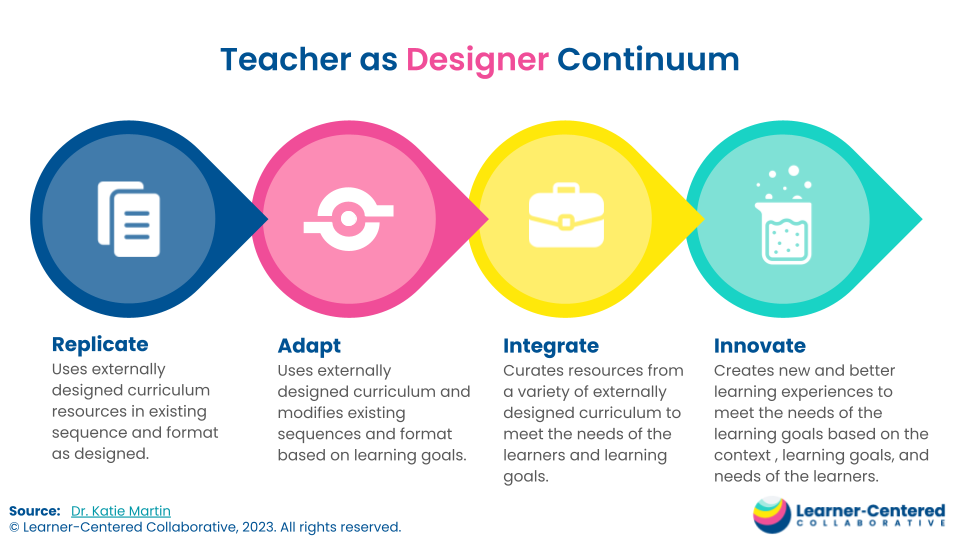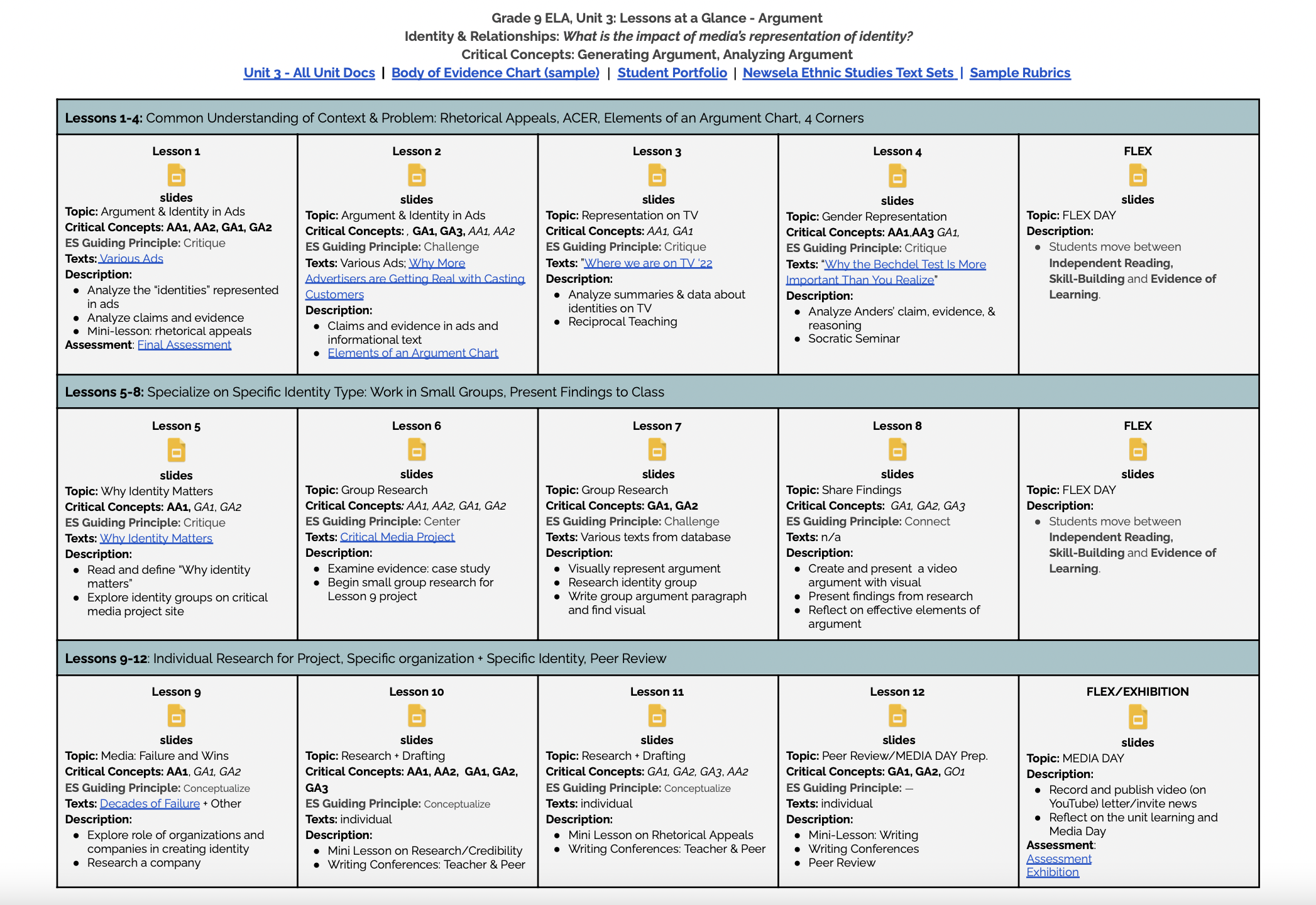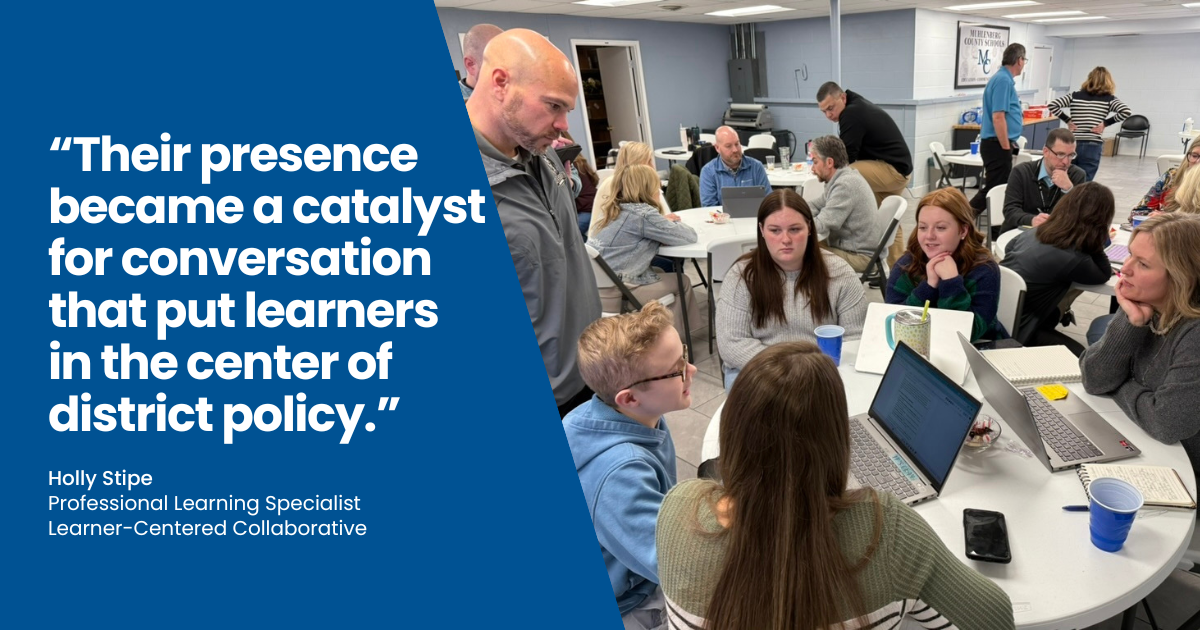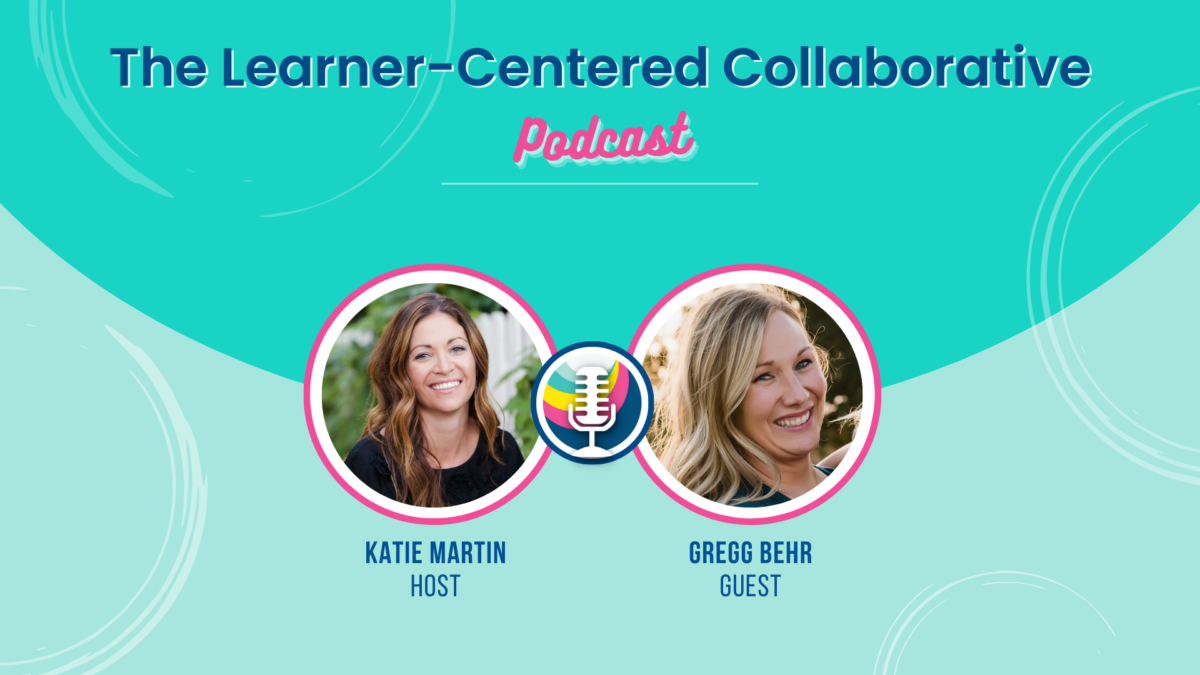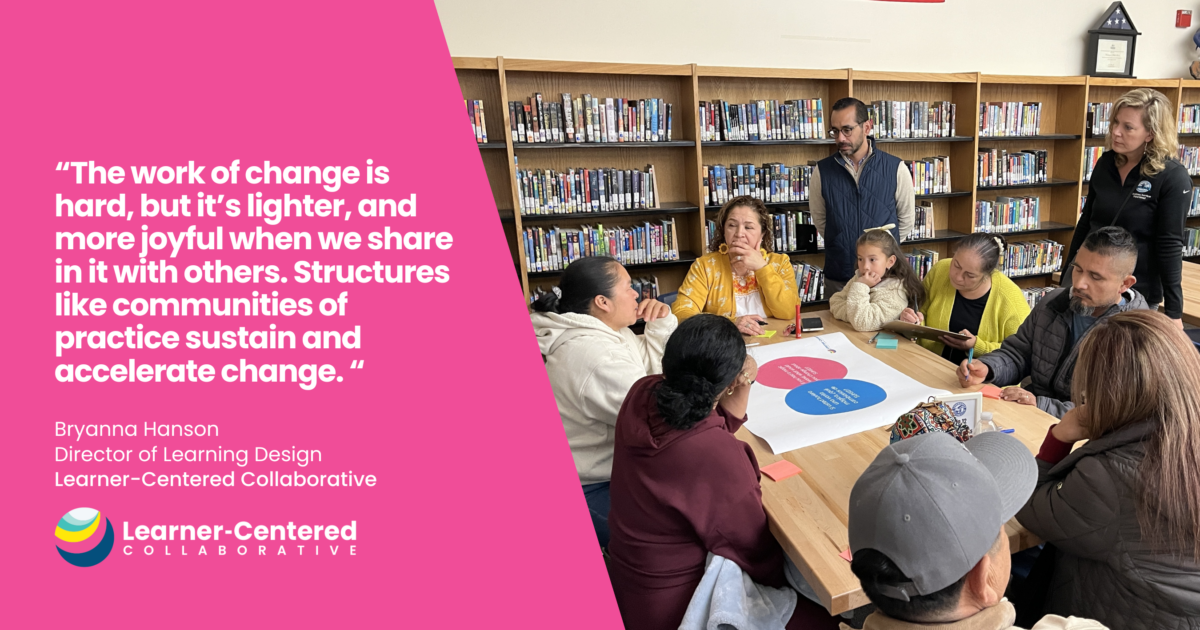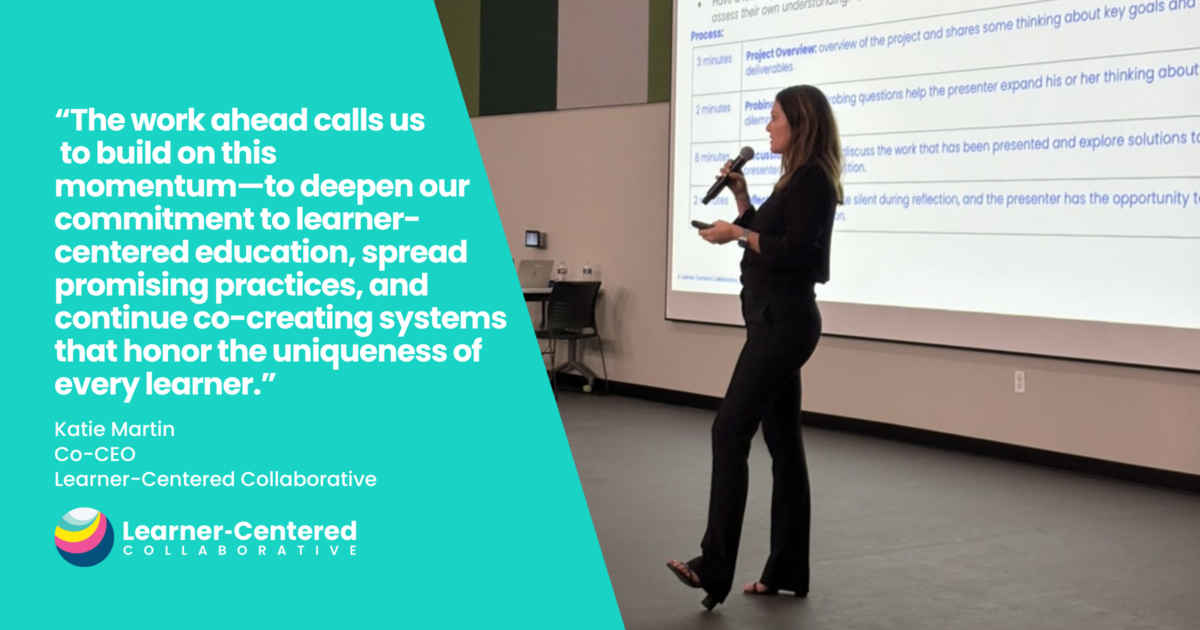Empowering Educators As Designers
By Liz Perry and Sarah Mathews
Liz Perry is the Director of Strategic Partnerships at the Learner-Centered Collaborative and former Director of Instructional Innovation at San Diego Unified School District
Sarah Mathews is the Program Manager of Cross-Content Literacy at San Diego Unified School District.
Educators As Curriculum Designers & Decision Makers
As an educational leader seeking to create the conditions for learner-centered experiences in your classroom, school, or district, what role do curricular resources play? In schools and districts across the country some educators are asked to replicate the scope and sequence of, sometimes to the daily lesson level, selected curricular resources. In other schools and districts, educators are encouraged to innovate and design novel learning experiences in any order and with any curricular resources they choose. In Dr. Martin’s blog Build the Foundation, Not the Ceiling, replicate and innovate mark the two ends of a four part continuum she calls the Teacher As Designer Continuum.
What this continuum encourages us to do is honor and nurture the important role educators play as they move along this continuum in designing learning experiences that center the unique learners in their classrooms. Educators may gravitate towards the replicate phase at various points in their career, such as educators new to the field, educators changing grade levels or content areas, or experienced educators that want to try new content or pedagogical approaches. The replicate phase certainly has its place and can be the foundation from which learner-centered innovation grows. However, it’s important to create the conditions for educators to move along the continuum over time. With greater familiarity with the content, resources, and learner community, educators adapt and/or integrate materials that better center learners in their classrooms. Empowering educators as curriculum designers and curricular decision-makers helps create learner-centered environments and experiences in which learners can see themselves represented and explore and express their unique identities.
Design and learner-centered education are inextricably linked. Dive into how this plays out at the classroom, school, district, and state level in What it Means to Center Learners By Design.
Promoting Consistency & Inclusive and Equitable Practices
Maintaining coherence at the system level while promoting autonomy at the site and educator level can feel like a hard balance to strike. If educators are using different curricular resources in their classroom, how can the district be certain all students have consistent and equitable access to the learning? To start, when clearly defined prioritized learning outcomes (e.g. prioritized standards, Power Standards, Critical Concepts, Learner Profile progressions, etc.) and proficiency scales are established at the district/system level, educators are able to select materials that align to these outcomes. At the same time, educators can be intentional in their selection to identify resources that also reflect the strengths, skills, interests, and needs of learners in their classroom. According to the National Equity Project:
“Culturally responsive teaching incorporates and centers unique learner experiences and identity, supporting educators to build learning partnerships that result in increased learner engagement and ownership of learning.”
Selecting resources that align to learners’ unique experiences and identities is one of the ways educators can promote inclusive and equitable practices. Of course, resources are only part of creating a culturally responsive experience for learners. On-going collaboration and learning is essential to build educators skills and self-efficacy in creating and maintaining safe and inclusive environments and instructional practices. In partnership with learners, educators empowered with the support of their district, administrators, and coaches, quality resources, and professional learning, create coherence by selecting resources aligned to clear learning outcomes determined at the system level and inclusive and equitable practices by ensuring they also reflect and center their unique learners.
Did you know our team has created and curated a collection of Inclusive and Equitable learner-centered classroom strategies. Check them out here.
San Diego Unified: 9th Grade Identity & Relationship Course
In San Diego Unified School District, a 9th-grade English Language Arts course was developed collaboratively by the District’s instruction team and classroom educators. The course serves as a resource for educators to engage with across the Teacher as Designer Continuum. The course was constructed around the theme of Identity & Relationships and encompasses six units, each with an essential question related to the theme, clear learning outcomes tied to the District’s six prioritized ELA standards, key texts, a final performance task, daily lesson plans and materials, and built-in “Flex Day” (time deliberately structured for reinforcing or extending learning based on learners’ strengths and needs) per week. In addition, the course meets the District’s Ethnic Studies graduation requirement, as it centers the voices of BIPOC communities and includes daily connections to the seven C’s of Ethnic Studies (Cultivate, Celebrate, Center, Critique, Challenge, Connect and Conceptualize).
While resources provided include daily lessons and all associated materials, educators are encouraged and supported through prompts in the course materials and professional development to adapt, integrate, and innovate to center their learners’ experiences, cultural and linguistic frameworks, interests, and needs. Additional supplemental resources, such as supplemental texts and educator-created text sets in NEWSELA, are provided for educators to choose from; though, educators can utilize any learner-centered resources aligned to the learning outcomes.
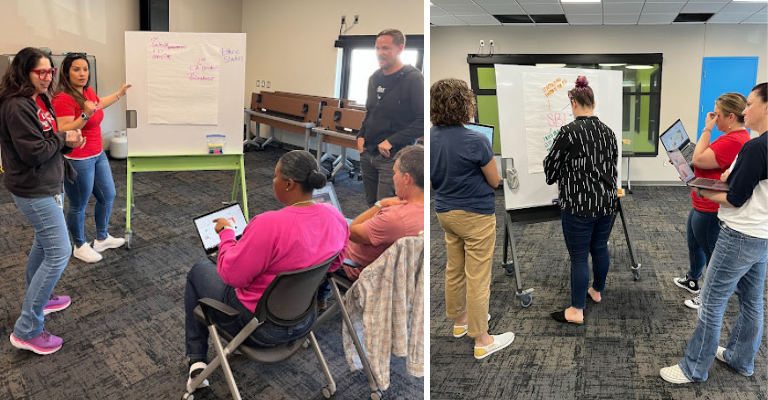
Empowered Teachers Empower Students
Learners are more likely to see themselves in the curriculum when educators have the tools and training to leverage their professional discretion in determining how to meet learners at their points of strength, interest, and need. “Empowered teachers,” Dr. Martin asserts, “create experiences that empower their students.” In San Diego Unified, educators empowered as designers reflected on the impact of these design decisions in their own classrooms. Laurisa Murray, a 9th grade ELA educator and curriculum designer at Mira Mesa High School stated:
“Not only did teachers share that they felt their lessons were so much more connected to their students, but the students were in an empowered classroom culture where they felt heard. I do not mean to say that this work was easy and natural. We faced many challenges but many barriers were lifted once the results were seen. Our students shared in a survey how they felt their learning was now “important” and their “families and [cultures] were more represented.”
Sharon Apple, ELA educator and curriculum designer at Hoover High School stated:
“Being a part of the reimagining of the curriculum is exciting! My voice was heard and in turn, I got to ensure students’ voices were heard!”
With clearly defined prioritized learning outcomes, districts set the foundation for consistent and equitable access to key learning outcomes; and, by empowering educators to be designers, they help to unlock the potential for that learning to be learner-centered.
Ready to design your way to a more learner-centered education experience? Connect with our team to get started.
This article was inspired by a presentation given by the co-authors during the California Association of Latino Superintendents and Administrators (CALSA) Summer Institute held in San Diego, CA in July of 2023. We want to recognize and appreciate the San Diego Unified instructional team and participating educators whose work this article showcases, as well as NEWSELA, who partners with the SDUSD instructional team and supported the shaping of this presentation.
